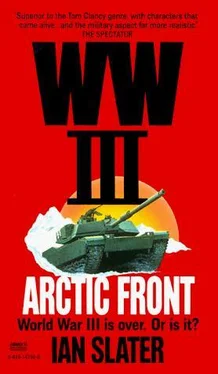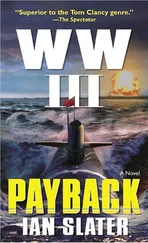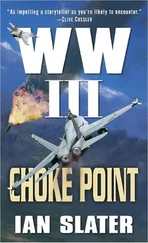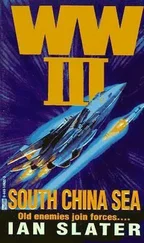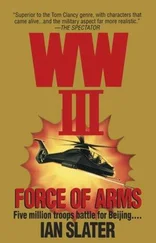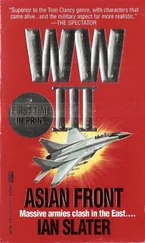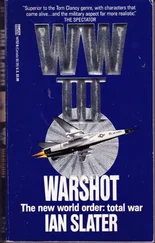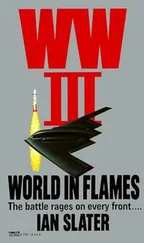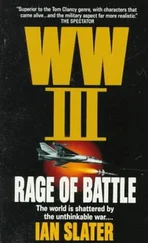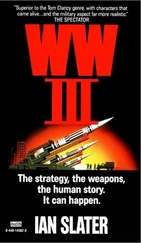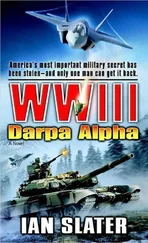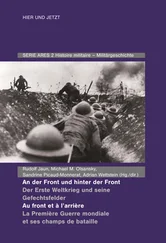But there was never any doubt of the outcome in the air, for even with over sixty Forgers plotted by the Acheson swarming toward the American task force, the F-14 pilots alone knew they would “eat them alive.” The Tomcats, at Mach 2.34, were twice as fast, their service ceiling fifty thousand feet, a good ten thousand higher than what the Forgers could pull. And as if this wasn’t enough, whereas the Forgers had a 150-mile-lo-lo-lo radius with maximum weapon load, the Tomcats’ 1500-mile range gave the American fighters that much extra time in the air, a crucial element in the titanic battle between the carriers. But the Siberians, Admiral Burke knew, were not so naive as to believe for a second that they would all permeate the American defenses. It was the Leninist strategy again: if only ten Forgers got through, they would play havoc with the American task force — their targets not the American warships but the amphibious transports. All the American naval firepower in the world could not make a landing without live marines.
In the tactical flag command center aboard the Acheson, Burke was told that the Siberian fleet had apparently stopped and was turning about. No one aboard the Acheson or any of the other American ships thought the Siberians were withdrawing simply because their radars had lit up upon seeing the Ticonderoga’s launch. Perhaps, Admiral Burke told Freeman, they were withdrawing out of the Americans’ killing range. But this would only be true for the shorter-range missiles like the Harpoons; the two Ticonderogas and other American ships had twenty-seven-hundred-pound Tomahawk cruise missiles aboard with a much greater range, and the Siberians surely knew this.
The Siberian air armada was still on screen, and now the night erupted. Over ninety-three missiles were fired by the American fleet in less than forty seconds, from every kind of mount, including track-swivel “six-packs,” and rows of armored vertical-launch “egg cartons” immediately below each Ticonderoga’s bridge, filling the night with a kaleidoscope of deadly pyrotechnics. So impressive was it that, despite the obvious dangers, petty officers throughout the fleet were obliged to threaten direst punishment — no shore leave — in order to keep some men, a number of cooks among them, below deck.
Aboard the USS Acheson, as two white dots moved toward one another on the blue screen, became one, then disappeared, the voice came once, twice, four times in fifty seconds: “Aegis evaluates kill!” There was a cheer from combat control.
“Shut up!” commanded the officer of the deck. “We’ve just started.” From the USS Acheson, the last Tomcats, F-15 Eagles, and F-18 Hornets were being hurled aloft to meet the incoming bandits, but now it was recognized that the Forgers were being overtaken by thirty Fulcrum MiG-29Cs.
This changed everything. Burke, however, confident in his air commander’s ability, turned his attention to blips now indicating sub-fired SS-N-15s, the thirty-three-mile-range Siberian equivalent of the American SUBROC missiles, beginning their arcs toward the American fleet. Quickly he looked up at the TMS — track management system — that was capable of processing, parsing, and correlating up to fifty-five hundred images per half hour without backlog buildup — when there were no glitches. But readouts were going haywire, and Burke had to reply on the not-so-sophisticated backup “stand-alone” ASIC — at sea independent control — tracking and targeting system. It was enough to give him the sub’s approximate position, the sonar/prop recognition giving a computer image. It was a rough one but nevertheless showed a sub composite with bevelled sail sprouting a “five-stick” cluster: Park Lamp direction-finding loop, high frequency and radome masts, with search and attack periscopes. An Alfa II.
“Any change in their fleet’s position?” asked Burke, as antisub control, with even its SUBROC having a range of only forty miles at best, fired off two Loral Hycor MK-36 decoys, simultaneously playing out its SLQ-25 Nixie towed torpedo decoy.
“Change in their fleet position?” demanded Burke again.
“No, sir.”
“Range?”
“Thirty-five miles, sir.”
It was a strange world, Freeman surmised, where, air-locked against chemical and biological as well as conventional warfare, you sat in the eerie blue combat control center, never actually seeing your enemy except for a computer image. Burke calmly tried to refine overall strategy even as his task force threw missile for missile, the Siberian fleet still retreating, its subs’ positions becoming less and less certain in the din of props churning at flank speed, decoys and chaff adding to the countermeasures, the latter defending the American fleet yet also making it more difficult to locate the exact positions of the deadly Atlas. If these twenty-one-foot-long, ten-mile range, active/passive homing torpedoes, with their 1,250-pound warheads, travelling at forty-five knots, got through, the U.S. task force would be in a lot of trouble.
“Sir!” announced the OOD.
“Yes,” acknowledged Burke, his right hand reaching for the message, his eyes not straying from the deceptively calm blue light of the console left of him where he pressed the “Subord” key. He was checking on the status of his CATF— commander amphibious task force — Admiral Leahy, and the CLF — commander landing force — Freeman, aboard the Davis.
The message he was holding told him that a Truxtun CGM— guided-missile cruiser — the USS Prescott, had been hit. There hadn’t been any trace of a Prescott- bound missile either on the carrier’s TFCC board or aboard the Prescott. The CGM lay foundering, holed at the waterline below the forward 127-millimeter gun turret where a twenty-three-foot-long, eight-foot-wide gash was taking water. Through the hole, dying sailors could see the flashes of the aerial battle, tail exhausts seen as winks of light through the cruiser’s plates, peppered as though by a shotgun, on the starboard side. The fiercely burning ship soon lit up the carrier abaft of her where a roaring cacophony of blue flames and bleeding steam catapults indicated the Acheson’s flight deck as the last of the Strike Eagles took wing.
The Prescott was sinking and fast; the only ones able to leave her were those thrown into the water from the concussion, the sky above them banging, orange-white burst after burst lighting up one of the Ticonderogas like stuttering flashbulbs. The crew of the Sea King rescue chopper, hovering on station a mile off the carrier’s stern for pickup should any of the takeoffs go awry, had been impatient to go help the Prescott’s men in the water but only now, when all planes were aloft, could the chopper move toward the few men she could spot waving on the cruiser’s afterdeck and those yelling in the water in the penumbra of fire.
Most of the 575 men aboard the Prescott were already dead, the fires aboard her a crematorium. Those not killed by impact or suffocated by the toxic fumes from fires that had “flash-jumped” throughout the ship — twisted and buckled watertight doors offering no sanctuary — were now dying in a flaming oil slick off the starboard quarter. Others were killed as the white-hot tower supporting the air search and G-band navigation radars crumbled into itself like the skeleton of some enormous animal, sending showers of white-hot metal hissing into the sea.
The enemy aircraft were now closing, U.S. fighters engaging, the background a staccato of victors and vanquished, Fulcrums tangling with Eagles and Tomcats high above the Eagles with the added burden of trying to stop the Forgers. Burke ordered the furball chatter to be taken off PA, so that only the air commander and those immediately concerned could hear it, for fear it would interfere with the concentration of those still watching the enemy fleet. None of the Forgers had yet fired missiles, so the question was, what had gotten close enough, without being picked up either by sonar or radar, to take out the Prescott?
Читать дальше
